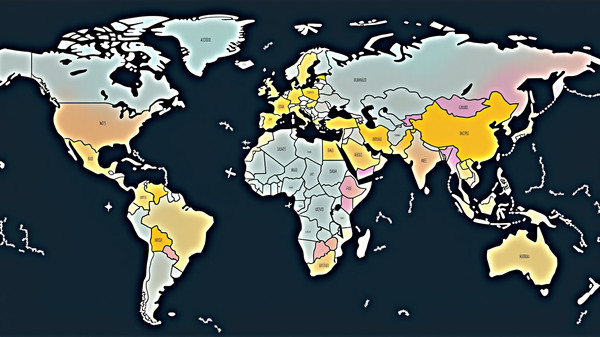Cryptocurrency Mining in 2023 Matches Australia's Electricity Consumption

The Energy Information Administration (EIA) has released a report on the electricity consumed by cryptocurrency miners. In 2023, companies engaged in cryptocurrency mining consumed as much electricity as the entire country of Australia.
The agency noted the rapid development of the mining sector in the United States.
According to the report, the amount of electricity needed for mining operations last year ranged from 0.2% to 0.9% of global demand. These figures correspond to the 12-month electricity consumption of countries like Australia and Greece.
Analysts highlight that over the past few years, the number of Bitcoin miners in the United States has significantly increased. In January 2020, the country's global share of mining the leading cryptocurrency was 3.4%. Four years later, this figure rose to 37.8%.
Representatives from the EIA believe that in the United States, companies consume between 25 TWh and 91 TWh when mining cryptocurrencies. This represents 0.6% to 2.3% of the state's total electricity needs. In other words, Bitcoin miners use energy comparable to the annual demand of three to six million households, as calculated by the EIA.
According to the agency, there are approximately 137 cryptocurrency mining operations in the United States. They are located in 21 states, with the majority of capacities concentrated in Texas, Georgia, and New York.
It's worth noting that Bitcoin mining difficulty has reached an all-time high, as previously reported.
Cryptocurrency mining has come under increased scrutiny due to its significant energy consumption. While it has become a lucrative business, concerns about its environmental impact persist. Critics argue that the energy-intensive nature of mining, particularly for proof-of-work cryptocurrencies like Bitcoin, contributes to carbon emissions and exacerbates climate change.
However, proponents of cryptocurrency mining argue that it can drive innovation in renewable energy. Some mining operations are exploring ways to utilize excess energy from renewable sources, such as solar and wind power, which might otherwise go to waste. Additionally, advancements in energy-efficient mining hardware and the potential shift to alternative consensus mechanisms, like proof-of-stake, could mitigate the environmental impact of cryptocurrency mining in the future.
Regulatory efforts regarding cryptocurrency mining vary by jurisdiction. Some countries have implemented strict regulations or outright bans on mining activities due to concerns about energy consumption, while others have embraced it as a source of economic growth and innovation. In the United States, regulatory approaches differ from state to state, with some jurisdictions offering incentives to attract mining operations, while others are more cautious or even hostile towards them.
The future of cryptocurrency mining will likely be shaped by technological advancements, regulatory developments, and evolving societal attitudes towards energy consumption and environmental sustainability. As the industry continues to evolve, finding a balance between the benefits of cryptocurrency mining and its environmental costs will be crucial for its long-term viability and acceptance.





